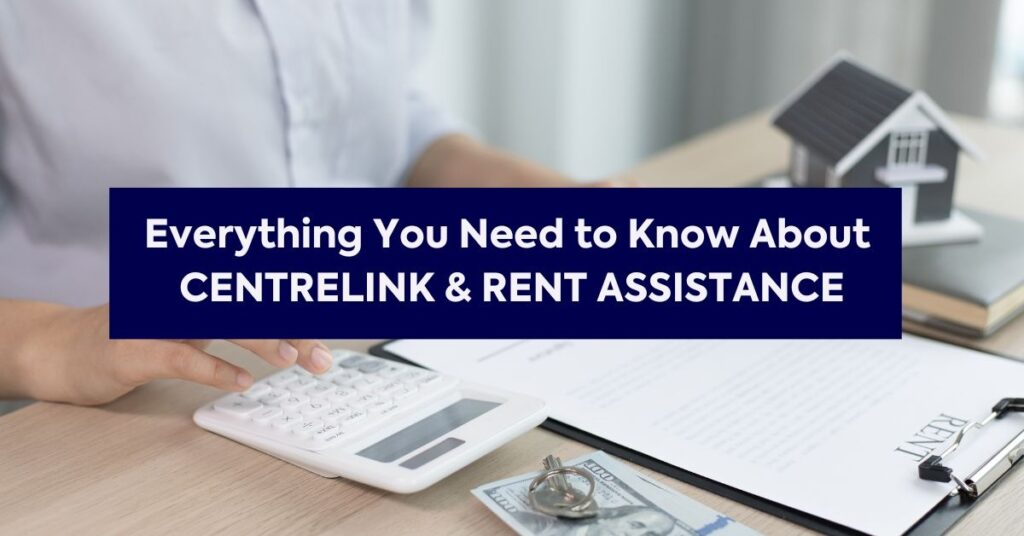Deciding to access your Total Permanent Disability (TPD) insurance payout from superannuation is a significant step. It’s natural to have questions about how it’s taxed. The good news is that a portion of your TPD payment might be tax-free, thanks to a calculation known as the ‘tax-free uplift’. Understanding the criteria for this uplift is key to knowing how much tax you might pay on your TPD lump sum. This article breaks down what you need to know about the TPD tax-free uplift calculator and its eligibility requirements.
What Defines Eligibility for the TPD Tax-Free Uplift Calculator
If you’ve received an approved Total and Permanent Disability (TPD) claim, you might be wondering about the tax implications of that payment. There are several considerations, and it’s not always clear whether you can extract a tax-free uplift on your superannuation benefit. In essence, a tax-free uplift calculation allows the Australian Tax Office (ATO) to assess how much of your TPD benefit payment is, in fact, tax-free. This can have a material bearing on the final payment amount calculated for you.
To qualify for this tax-free uplift, the ATO will require a few important bits of information. And let me be clear, supporting an interest portion documentary is not random information; they are utilised to help determine the tax-free portion of your super benefit. Imagine it this way, your super fund has amounts that have already been taxed, and amounts that have not. The uplift calculation serves to distinguish those amounts when you are initiating a TPD claim.
Here are the main things that are looked at:
- Permanent Incapacity/Disability: You need to have a condition that prevents you from working in your usual occupation, or any occupation you’re reasonably suited to by education, training, or experience. This needs to be certified by medical professionals.
- Valid Medical Certification: Doctors need to provide clear evidence of your disability and how it impacts your ability to work. This isn’t just a quick note; it’s usually a detailed report.
- Eligible Service Date: This is the date your superannuation account first started. If you’ve moved your super between funds, it’s usually the earliest date you joined a super fund.
- Date Last Worked: This is the date you stopped working because of your disability. It’s not necessarily the date you got sick, but the date your employment ended due to the condition.
- Age and Preservation Age: Your age matters, especially in relation to your preservation age. This is the age at which you can access your superannuation, and it depends on your date of birth. Generally, if you’re under your preservation age, the tax rules are different.
The calculation aims to identify the portion of your TPD benefit that relates to future earnings you’ve effectively lost due to your disability, and this portion can be treated as tax-free.
It’s worth noting that if you have multiple superannuation accounts, each one might have a different tax-free uplift calculation. This is because the details, like eligible service dates, can vary between funds. So, understanding each account’s specifics is pretty important.
Permanent Incapacity / Disability Requirements in the TPD Tax-Free Uplift Calculator
To use the TPD tax-free uplift calculator, there are several eligibility requirements based on your condition. It is not enough to be off work for a short time. The definition of permanent incapacity or disability is quite strict. To prove your incapacity, you need to be unable to fulfil your usual duties, or any duties which you are reasonably qualified to perform by education, training or experience, due to illness or injury. And the incapacity will need to be permanent, meaning it is likely to be long-lasting and unlikely to improve with medical treatment.
The crux of the eligibility is proving that your disability is both total and permanent. This is not subjective; it will require credible medical evidence.
Here’s a breakdown of what’s generally considered:
- Nature of the Incapacity: The condition must be a result of an illness or injury. Pre-existing conditions might be covered, but it depends heavily on the specific policy terms and when the condition manifested or worsened.
- Duration and Permanence: You need to demonstrate that the incapacity is permanent. This often means you’ve been unable to work for a continuous period, typically six months or more, and there’s no reasonable prospect of you returning to work in any capacity.
- Impact on Earning Capacity: The disability must have a significant and lasting impact on your ability to earn an income. This is why the focus is on your usual occupation and any other suitable occupations.
Understanding the fact that the super or insurer will analyse your claim using medical evidence and the wording of the policy itself is significant. An apparent case for you may present differently, according to the assessing organisation, if the medical evidence does not reflect features of the policy definition.
If you decide to pursue superannuation support, be mindful of accessing your fund early in cases of financial hardship or terminal illness etc., that may present as part of your disability, and be willing to access your fund early.
Different super funds may have similar but not identical definitions or wording of requirements; always check your policy. We aim to show that your situation meets the permanent incapacity standard (as it is specified in the fund).
Valid Medical Certification Needed for the TPD Tax-Free Uplift Calculator
To even think about using the TPD tax-free uplift calculator, you absolutely need solid medical proof of your condition. It’s not just about feeling unwell; it’s about demonstrating that your illness or injury is so severe that it’s unlikely you’ll ever be able to work in a job you’re qualified for. This is a pretty big deal, and the ATO takes it seriously.
Two legally qualified medical practitioners must certify your condition. This isn’t a suggestion; it’s a requirement. These doctors need to assess your situation and provide a formal statement confirming your total and permanent disability. They’ll look at your education, your experience, and your training to determine if you can realistically be employed in a role suited to your background.
Here’s a breakdown of what’s generally expected:
- Doctor’s Qualifications: Ensure the doctors providing the certification are registered medical practitioners with the Australian Health Practitioner Regulation Agency (AHPRA).
- Detailed Assessment: The medical reports should go beyond a simple diagnosis. They need to detail the nature of your condition, its impact on your ability to work, and the prognosis regarding your capacity to return to any form of employment.
- Statement of Incapacity: A clear statement from each doctor confirming that, due to your condition, it is unlikely you will be able to engage in any occupation for which you are reasonably qualified by education, training, or experience.
It’s important to understand that the certification needs to be current and relevant to your claim. Old reports might not be sufficient, so check with your super fund or insurer about their specific requirements for up-to-date medical evidence.
Without this proper medical certification, your TPD claim won’t get approved, and therefore, you won’t be able to use the tax-free uplift calculator. It forms the bedrock of your entire claim, so getting this right is the first, most critical step.
Eligible Service Date: How It Impacts Your TPD Claims
When you’re assessing a TPD payout, the date of first joining a superannuation account, or qualifying service date, is quite significant in determining how the tax-free uplift will be worked out. This date acts as a benchmark for estimating how much of the super benefit could potentially be tax-free. It is, in fact, used to identify the ‘past service period’ in tax-free uplift calculation.
Consequently, if you have moved the super from one fund to another, the eligible service date will be the earliest date from the original fund. This emphasises the importance of exercising caution when consolidating super funds, due to the risk of the applicable eligible service date changing, thereby affecting the taxation results. It is important to remember that it’s not solely about the date you started with your current employer/sponsor, but it’s the very first time you made contributions into a superannuation account.
Here’s a simplified look at how it fits in:
- Eligible Service Date: The date your superannuation account first commenced.
- Date Last Worked: The date you stopped being gainfully employed due to your disability.
- Preservation Age: The age at which you can access your superannuation without a condition of release (usually between 55 and 60).
The period between your eligible service date and your date last worked is generally considered the ‘past service period’. This portion is what gets taxed at a concessional rate, typically 22% on the taxable component. The time from your last date worked up to your preservation age is often treated as the ‘future service period’, which can contribute to your tax-free component.
It’s important to get this date right. Incorrectly applying the eligible service date can lead to overpaying tax on your TPD benefit. Always check your superannuation statements or contact your fund to confirm this date.
Understanding your eligible service date is just one piece of the puzzle when it comes to TPD tax implications. For instance, the way you receive your payout, whether as a lump sum or a rollover, also has tax considerations. If you’re considering options like a novated lease for a new vehicle, especially an electric one, understanding how your overall financial situation is affected by your TPD payout is important, as these arrangements have their own set of rules and tax implications.
Date Last Worked: Role in the TPD Tax-Free Uplift Calculator
The date you last performed work is significant in determining how much tax you may pay on a TPD payment from your super. Essentially, it is the date that the Australian Taxation Office (ATO) regards you as no longer meeting the definition of eligible for work. This sounds easy, and it can be straightforward, but it may also be interpreted as the day you were injured or became sick, or it may be by the date the employment ceased or the last date you could work, and this can occur months or even years after you were first sick.
Your super fund uses this date to calculate the tax-free uplift, and if you get this date incorrect, this can lead to you paying more tax than you ought to. We can see this in cases where funds have accepted as the date a TPD claim is accepted, or the date the taxation is calculated as the date last worked, rather than the date last worked. In these cases usually results in the person paying more tax.
Here’s a breakdown of why it matters:
- Determining the Taxable Component: The period between your eligible service date and your date last worked is generally considered the ‘past service period’. This portion is subject to tax at a rate of 22%.
- Calculating the Tax-Free Component: The period from your date last worked up to your preservation age is often treated as the ‘future service period’, which can contribute to your tax-free component.
- Impact on Overall Tax Liability: A correctly identified date last worked helps ensure the tax-free uplift calculation is accurate, potentially reducing the overall tax you pay on your TPD benefit.
It’s important to be aware that consolidating your super funds can sometimes affect your eligible service date and, consequently, your date last worked for tax calculation purposes. Always check how this might impact your TPD payout.
Age & Preservation Age Thresholds for the TPD Tax-Free Uplift Calculator
When you’re looking at a TPD payout, your age and when you reach your preservation age are pretty important for how much tax you might end up paying. Basically, if you’re under your preservation age, the money you get from your super fund is usually taxed. But here’s the thing: the super fund does a ‘tax-free uplift’ calculation, which means a part of your payout can be tax-free. This can change the actual tax rate you pay, making it anywhere from 1% to 18%, depending on your situation.
Your preservation age isn’t a fixed number; it actually depends on when you were born. The government has changed these rules over time, so it’s not the same for everyone. Generally, if you were born before July 1, 1960, your preservation age is 55. If you were born between July 1, 1960, and June 30, 1964, it gradually increases by a year for each of those periods. For anyone born on or after July 1, 1964, their preservation age is 60.
Here’s a quick rundown:
- Born before 1 July 1960: Preservation Age is 55.
- Born 1 July 1960 – 30 June 1961: Preservation Age is 56.
- Born 1 July 1961 – 30 June 1962: Preservation Age is 57.
- Born 1 July 1962 – 30 June 1963: Preservation Age is 58.
- Born 1 July 1963 – 30 June 1964: Preservation Age is 59.
- Born from 1 July 1964 onwards: Preservation Age is 60.
Once you hit your preservation age, you can usually access your superannuation benefits, including TPD payouts, under certain conditions. If you’re over 60, all your superannuation withdrawals are generally tax-free. It’s a good idea to check your specific date of birth against these age thresholds to get a clearer picture of your potential tax situation. Understanding these age limits is a key part of figuring out your TPD tax-free uplift. It’s worth looking into how these rules might affect your superannuation payout and planning accordingly.
Lump Sum vs Rollover Options under the TPD Tax-Free Uplift

Once your Total and Permanent Disability (TPD) claim is approved, you will typically have an option regarding how you receive the payment from your super fund. There are fundamentally two means: one is as a lump sum, and the other is rolling over the funds. Understanding these options can significantly affect your tax position.
Lump Sum:
A lump sum payment means that the total amount of the TPD benefit will be paid to you in one payment. A simple concept, it does mean you will need to manage the funds yourself; the tax implications will be calculated based on your preservation age and the tax-free uplift as it relates to you.
Rollover:
Alternatively, rather than taking the funds out, you may choose to roll over your TPD benefit payout into another superannuation fund or remain in your existing fund. Rolling over may be beneficial, particularly where you do not require immediate access to the funds, or where the new fund offers better investment options or lower fees. Just be aware that consolidating super funds can affect how the tax-free component is calculated (which could affect the tax-free uplift). It is wise to check the rules regarding the receipt of funds.
Key Considerations:
- Tax Implications: The tax treatment can differ significantly between taking a lump sum and rolling over. If you’re under preservation age, a lump sum withdrawal will be taxed, but the tax-free uplift reduces the taxable portion. Rolling over might defer tax, but the rules for calculating the tax-free component in the new fund need careful review.
- Financial Needs: Consider your immediate and future financial requirements. A lump sum provides immediate access, while a rollover allows for continued growth within the superannuation system.
- Preservation Age: Your age is a major factor. If you’ve reached preservation age (between 55 and 60, depending on your birth date), you can access a portion of your superannuation tax-free. After age 60, all superannuation withdrawals are generally tax-free.
- Multiple Accounts: If you have several superannuation accounts, each might have a different tax rate applied to its TPD payout. Consolidating these could simplify things, but might also alter the overall tax outcome. It’s often wise to get advice before consolidating.
Maintaining Valid Documentation & Timing for the TPD Tax-Free Uplift

Getting your TPD claim sorted is a big deal, and keeping all your paperwork in order and understanding the timelines involved is pretty important for that tax-free uplift calculation. It’s not just about having the right medical certificates; it’s about making sure everything lines up correctly with your super fund and the ATO.
The dates you provide are absolutely critical for determining the taxable and tax-free portions of your payout.
Here’s a breakdown of what you need to keep track of:
- Eligible Service Date: This is generally the date your superannuation account first started. If you’ve moved your super between funds over the years, the earliest date usually counts. It’s a key figure for the tax calculation.
- Date Last Worked: This isn’t necessarily the date you became ill or injured, but rather the date you stopped being gainfully employed due to your disability. This date is used to calculate the period between your last day of work and your preservation age.
- Preservation Age: This is the age at which you can access your superannuation. It depends on your date of birth, typically falling between 55 and 60. Knowing your preservation age is vital for understanding when your super becomes accessible and how it’s taxed.
It’s worth noting that super funds can sometimes get these calculations wrong, so it’s a good idea to double-check everything. If you’ve consolidated your super accounts, make sure you have the correct eligible service date from the earliest fund. This can have a significant impact on your tax outcome. For instance, understanding how asset finance works can also have tax implications for your overall financial picture, so it’s good to be aware of various tax benefits.
Keeping accurate records and understanding these dates helps ensure you get the correct tax-free uplift on your TPD benefit. Don’t hesitate to ask your super fund for clarification if anything seems unclear.
Frequently Asked Questions
What does ‘tax-free uplift’ mean for my TPD payout?
A ‘tax-free uplift’ is a special calculation your super fund does when you get a TPD payout. It works out a part of your money that won’t be taxed. This means you might pay less tax overall on your payout, with the tax rate often falling between 1% and 18% instead of the usual 22%.
How does my date of birth affect the tax on my TPD payout?
Your date of birth is important because it determines your ‘preservation age’. This is the age you can access your super money without special conditions. Once you reach your preservation age (which is between 55 and 60, depending on when you were born), you can take out a certain amount tax-free. After age 60, all super withdrawals are generally tax-free.
What is an ‘eligible service date’ and why does it matter?
Your ‘eligible service date’ is usually the day you first started your superannuation account. If you’ve moved your super between different funds, the earliest start date is used. This date helps figure out how much of your TPD payout is taxed, as it’s used alongside your date of last work.
How does the ‘date last worked’ influence my TPD tax calculation?
The ‘date last worked’ is the day you stopped working because of your disability. It’s not necessarily when you got sick, but when you stopped earning an income. This date, combined with your eligible service date, helps determine the period that might be taxed at a higher rate.
Can I choose to get my TPD payout as a lump sum or in instalments?
Yes, you often have a choice. You can receive your TPD benefit as a single lump sum payment all at once, or you can choose to get it paid in regular amounts over time. The best option depends on your personal financial needs and tax situation.
What if my super fund calculated the tax incorrectly on my TPD payout?
It’s a good idea to check your TPD payout tax calculation, as errors can happen. If you think your super fund has withheld too much tax, you usually need to sort it out with them directly, as they are the ones who report to the tax office. Getting professional advice can help ensure the calculation is right.












